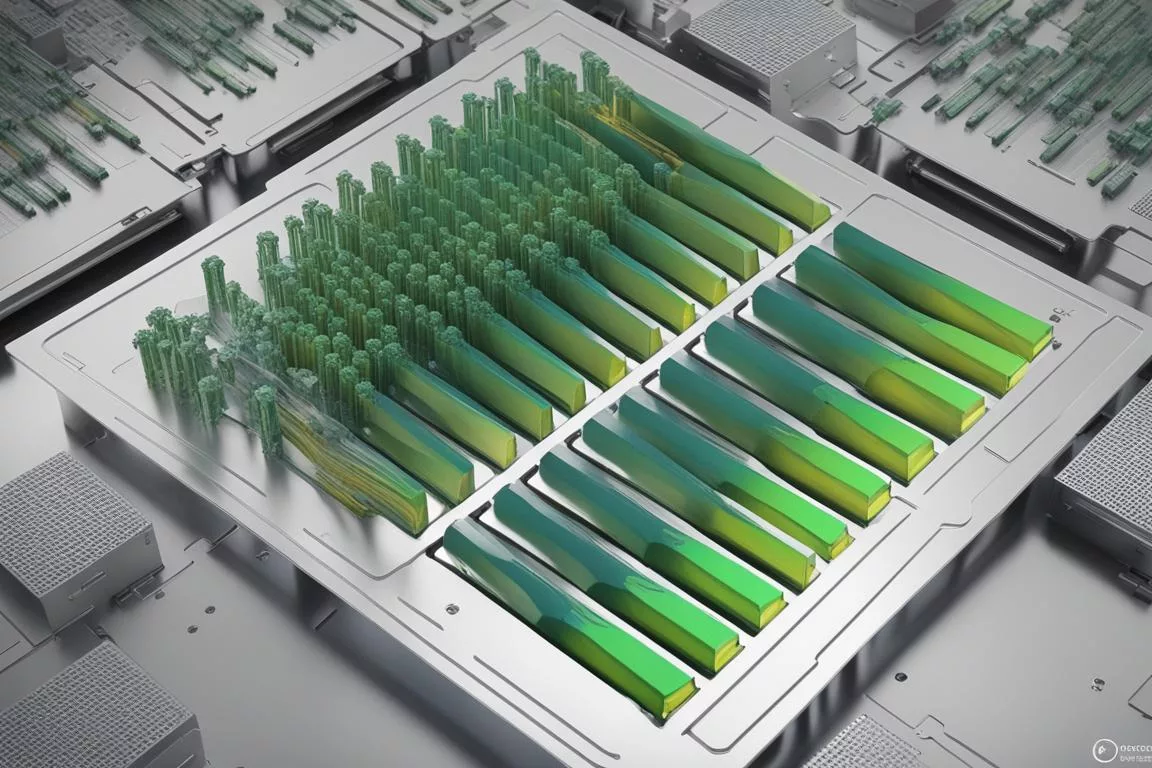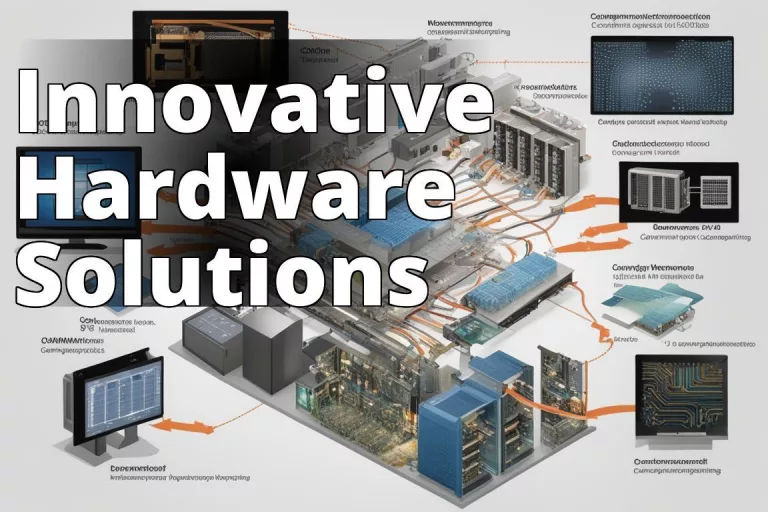In 2024, traditional approaches to hardware design, which often prioritize performance at the expense of power consumption, are being challenged and reimagined. This shift is not merely a nod to environmental stewardship but a pragmatic response to the escalating costs and limitations of energy resources. For enthusiasts of technology and environmental conservation alike, the journey into energy-efficient hardware innovations is both a passion and a necessity.
Learn about Energy-Efficient Hardware Innovations
- Discover cutting-edge technologies like 3D stacked memory, nonvolatile memory, and quantum computing.
- Understand how these innovations contribute to energy efficiency in hardware.
- Gain insights into the future of energy-efficient hardware solutions.
1. Energy-Efficient Hardware Innovations
1.1. 3D Stacked Memory
The evolution from flat, 2D chip architectures to 3D stacked memory is a game-changer. This innovation isn’t just about piling layers upon layers; it’s a strategic rethinking of space and energy. By stacking memory cells vertically, 3D memory dramatically increases density and speed while reducing power consumption. Imagine your computer not just working faster but doing so with a fraction of the energy used by traditional systems. The implications for data-intensive applications, from environmental modeling to real-time analytics in distributed systems like RTI’s Connext DDS, are profound.

1.2. Nonvolatile Memory
Gone are the days when turning off your device meant losing unsaved work or waiting agonizing minutes for it to wake up. Nonvolatile memory, such as flash and emerging technologies like ferroelectric RAM (FeRAM) and magnetoresistive RAM (MRAM), retain data even when the power is off, combining the speed of RAM with the permanence of hard drives. But it’s not just about convenience; these technologies consume significantly less power, contributing to energy-efficient computing that aligns with sustainable goals.
1.3. Near-Threshold Computing
Dancing on the edge of what’s possible, near-threshold computing operates processors at voltages slightly above their threshold of activation. This delicate balance minimizes energy consumption while maintaining performance. It’s like finding that sweet spot in your car’s accelerator where you’re cruising efficiently without wasting fuel. In computing, this translates to significant energy savings, especially in large-scale operations like cloud services or the vast networks supporting IoT (Internet of Things) devices.
1.4. Approximate Computing
Not every task requires digital perfection. Approximate computing leverages this concept, allowing minor errors in exchange for reduced energy use. Think of it as choosing not to iron your clothes when you’re just lounging at homea practical compromise. For applications like multimedia processing or machine learning where exact precision is unnecessary, approximate computing can cut power consumption dramatically. It’s a paradigm shift that asks what level of accuracy is truly needed, challenging the status quo of computing.
1.5. Photonic Interconnects
Light, the fastest thing in the universe, is steering us toward a future where data is transmitted not through electrons in wires but photons in optical fibers. Photonic interconnects, with their capacity to carry vast amounts of data over long distances without loss, promise not just speed but energy efficiency. The reduction in heat and resistance compared to traditional copper interconnects could revolutionize energy use in data centers and high-performance computing systems.
1.6. Neuromorphic Computing
Inspired by the human brain, neuromorphic computing reimagines the architecture of processors to mimic neural networks. This approach offers exceptional efficiency in tasks like pattern recognition and sensory data processing, consuming a fraction of the energy of conventional computing methods. It’s a leap toward machines that think and learn like us, but with the added benefit of environmental consciousness built into their very design.
1.7. Quantum Computing
While still in its nascent stages, quantum computing holds the promise of solving complex problems exponentially faster than current technologies, with a fraction of the energy consumption. Quantum computers leverage the principles of quantum mechanics to process information in ways that traditional systems cannot fathom. The potential for quantum computing to revolutionize everything from cryptography to climate modeling is immense, offering a glimpse into a future where our technological ambitions are no longer constrained by energy limitations.
2. Conclusion
The journey through energy-efficient hardware innovations is a testament to the ingenuity and perseverance of those at the forefront of technology and environmental conservation. These advancements are not just about doing more with less but redefining what is possible in the realm of computing. As we continue to push the boundaries of efficiency and performance, the convergence of these innovations with real-time systems like RTI’s Connext DDS represents a thrilling frontier for sustainable technology solutions.
In embracing these innovations, we are not merely adapting to the constraints of our world but reshaping them, crafting a future where technology and sustainability are inextricably linked. The path forward is clear: to invest in, develop, and deploy these energy-efficient hardware innovations, ensuring that our digital world thrives in harmony with the natural one.
3. References
For those intrigued by the potential of these energy-efficient hardware innovations and their applications in environmental data analytics, further exploration is encouraged. Visit authoritative resources and engage with communities driving these technologies forward. The journey is just beginning, and your curiosity and passion can help shape the future of sustainable computing.
Insider Tip: Keep an eye on emerging startups and academic research in these areas. The next big breakthrough in energy-efficient hardware could be just around the corner, waiting for its moment to redefine what we consider possible.
Common Questions
Who benefits from energy-efficient hardware innovations in environmental data analytics?
Companies in the environmental data analytics field benefit the most.
What are some examples of energy-efficient hardware innovations?
Examples include low-power processors and energy-saving sensors.
How can energy-efficient hardware innovations improve environmental data analytics?
They can reduce energy consumption, lower costs, and minimize environmental impact.
What if I already have hardware in place? Can I still benefit?
Yes, you can upgrade components gradually for energy efficiency gains.
How do energy-efficient hardware innovations contribute to sustainability?
They reduce overall energy usage and promote a greener environment.
Won’t switching to energy-efficient hardware be costly?
Initially, there may be costs, but long-term savings outweigh the initial investment.
Next Steps
Round Table Environmental Informatics (RTEI) is a consulting firm that helps our clients to leverage digital technologies for environmental analytics. We offer free consultations to discuss how we at RTEI can help you.


